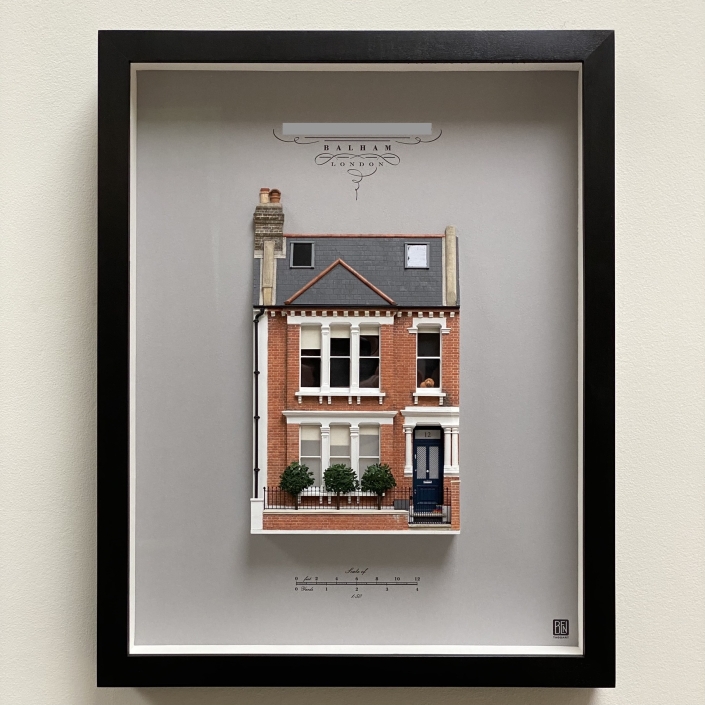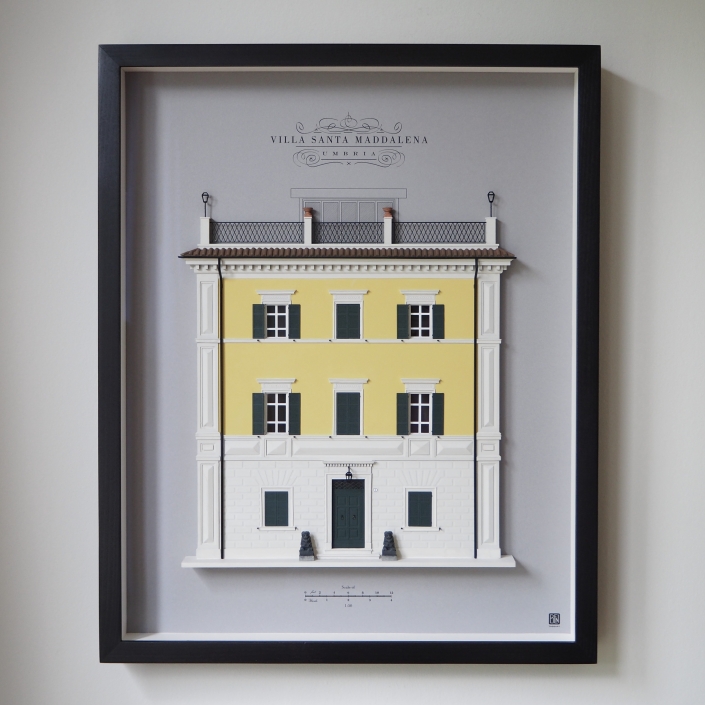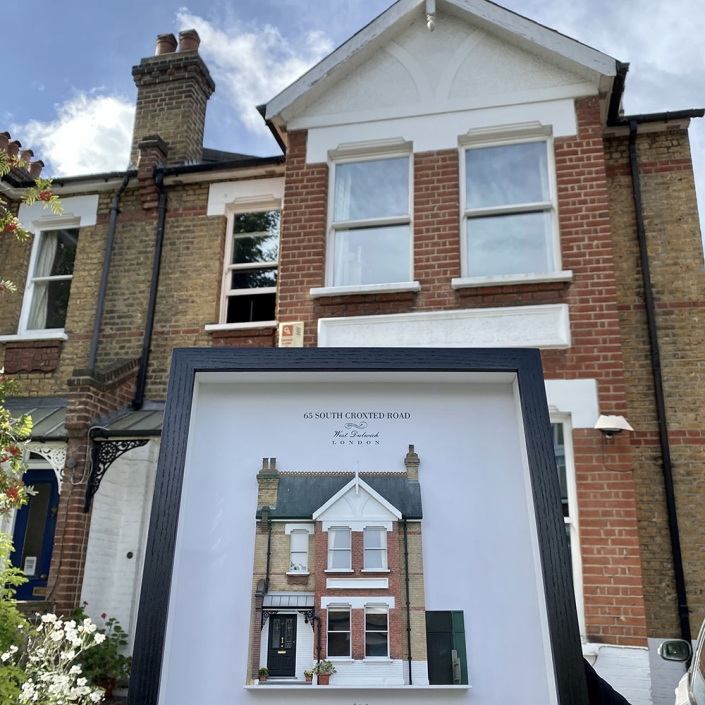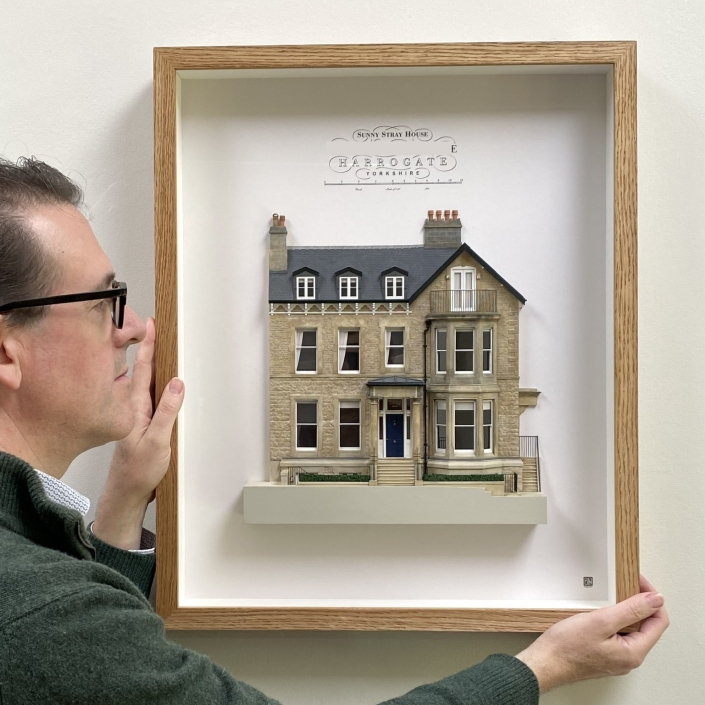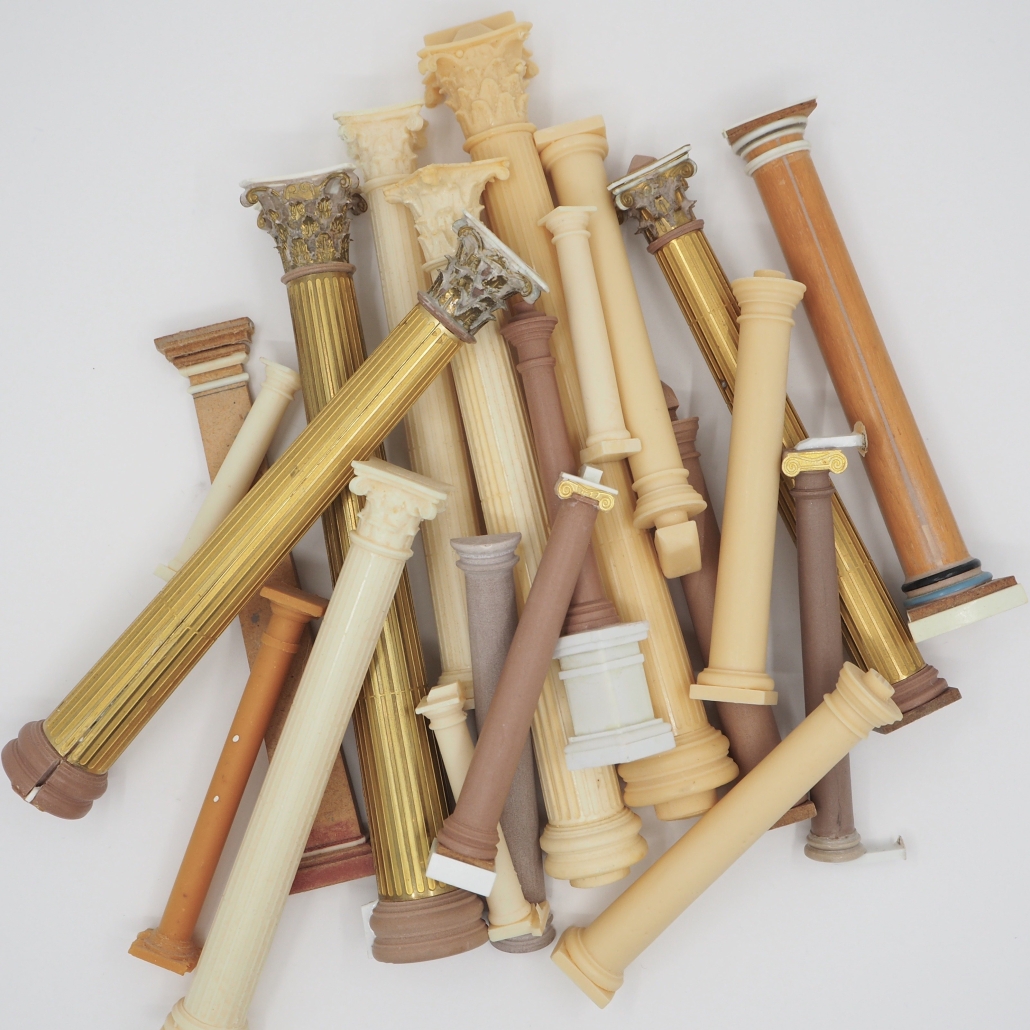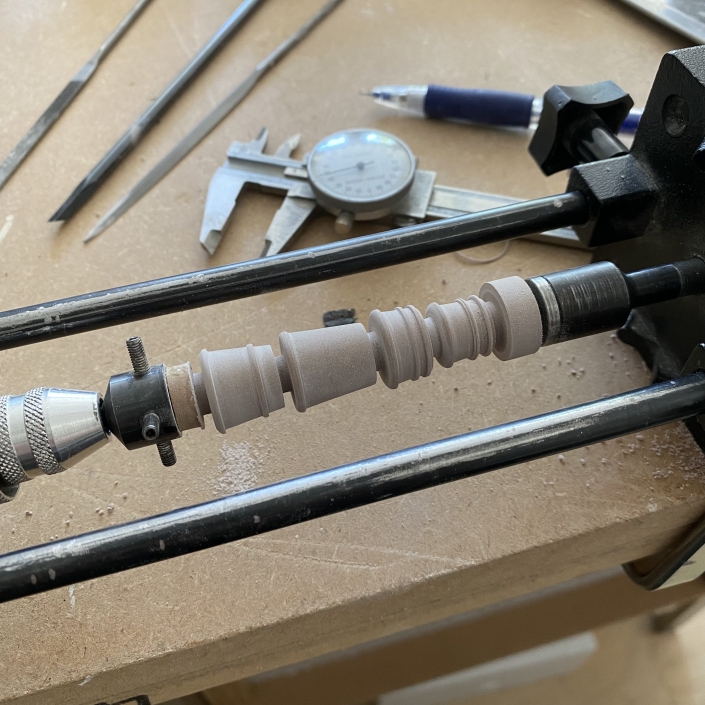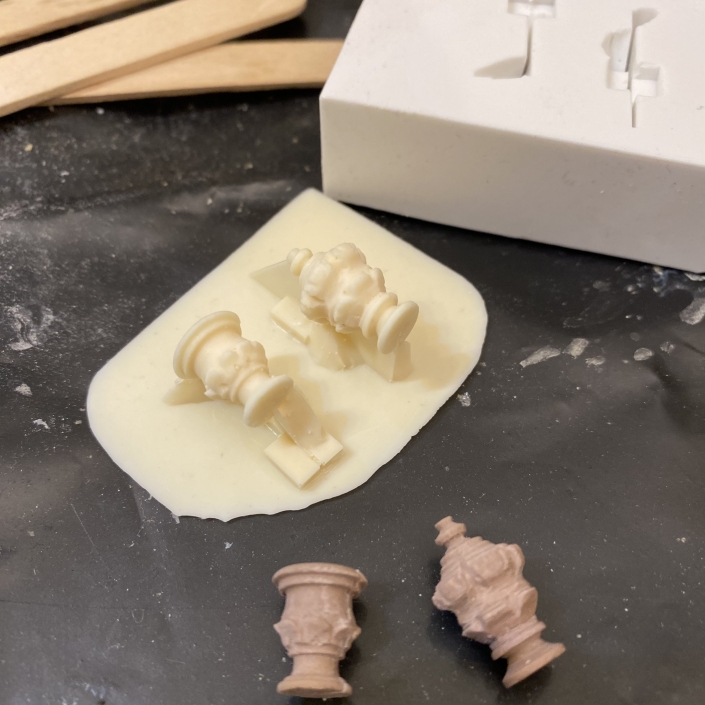Any Building Anywhere
It is possible to create a model house portrait of any type of building, from town house to country estate, from shop or pub to Listed building. Without a site visit this makes the ultimate in surprise gifts! The service is not limited to the UK, and commissions are welcome from anywhere in the world! Please email me a single photo of your house, and let me know the rough location, and I will provide you with an estimate, or give me a call for more information. There are more details about ‘small projects’ here.
An indication of the range of services offered and prices can be found here.
Latest News
February 2024
When I post images of my work on social media, and I have to say that I’m struggling with a very bad Instagram habit at the moment, a lot of people ask me about the processes involved in making the models. Last month I shared a little information on my blog about 3D printing, and how after years of resisting using this as a creative medium, I now find that it has become an incredibly useful tool. I still work primarily by hand, and you can’t beat that, but sometimes it’s not such a bad thing to embrace new technology.
This set me thinking about publishing a series of posts about the various methods and processes I employ in my model making, so for February I thought I would explain a little about how I use resin casting.
The repetition of architectural features is common with most buildings, but with classical architecture it is ubiquitous. Most of my work is in making buildings where there are rows of identical columns, balusters, corbels or other decorative features. On the model, they must not only look identical, but be precisely the same size. Making a colonnade where some of the columns are slightly shorter than others, even by half a millimetre, would throw the whole thing out, so duplicates must be made to an exacting standard.
I start by making a single object, such as a decorative urn. On a tiny lathe, a small block of super soft chemical wood is carved into the correct shape, simply by eye, using a minute chisel. Having made my master shape, I construct a small plastic box and the part is glued to the inside. The exterior of the box is sealed for leaks with a thick coat of glue, and the interior is sprayed with a silicon release agent.
I then pour a liquid rubber mixture into the box, which is combined with a hardening agent. After waiting 24 hours the sides of the box can be torn off to reveal a hard block of rubber, with the urn trapped inside. A quick snip with a surgical scalpel releases the urn, leaving a negative imprint in the rubber. This is my mould, into which I then pour a plastic resin. This is usually done outdoors with me wearing a mask and goggles, as the resin is pretty lethal stuff. It comes in two separate bottles and when measured out and mixed together, forms a light brown resin which will only stay in a liquid form for around three minutes. After that it hardens like plastic.
The new plastic resin part can then be popped out of the rubber mould, cleaned up and painted.

